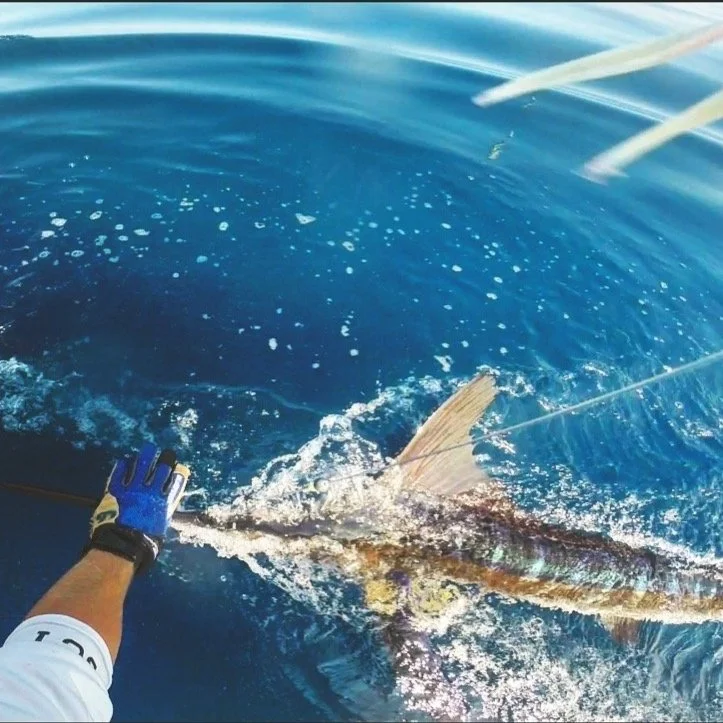WHITE MARLIN
(KAJIKIA ALBIDA)
The white marlin is a sleek, fast, and powerful billfish native to the warm waters of the Atlantic Ocean. Recognized by its sharply pointed bill and tall, rounded dorsal fin, the white marlin is smaller and more agile than its blue marlin cousin—making it a prized catch among sport fishermen.
Typically weighing between 50 and 100 pounds, white marlin are known for their speed, surface acrobatics, and unpredictable fights, often leaping dramatically when hooked. These characteristics make them a true test of angling skill and a favorite in offshore tournaments.
White marlin are pelagic, meaning they live in the open ocean, often hunting near the surface for squid, mackerel, and other small fish. Due to their migratory nature and sensitivity to environmental change, they are considered a species of concern, with conservation efforts focused on reducing bycatch and promoting responsible catch-and-release practices.
Key Distinguishing Features
Upper jaw is significantly longer than the lower, forming a slender, spear-like bill
Back is dark blue; underside is silvery white
Brown spots may appear along the white sides of the body
Some fish have faint, wavy white stripes running from head to tail
First dorsal fin runs nearly the length of the back and is dark blue with black spots (spots may fade toward the rear)
Pelvic and second dorsal fins are dark blue
First anal, first dorsal, and pectoral fins have rounded or blunt tips
Pectoral fins and tail (caudal fin) are blackish-brown, with pectorals sometimes tipped in white
Covered in small, dense bony scales
Lateral line is clearly visible and runs straight along the body, curving only slightly above the dorsal fin


